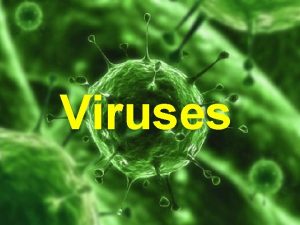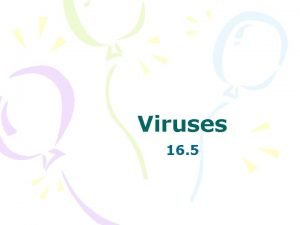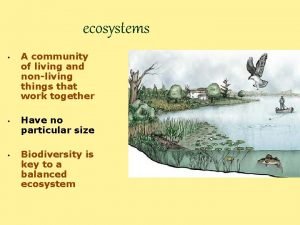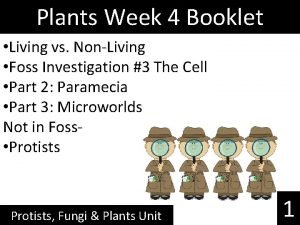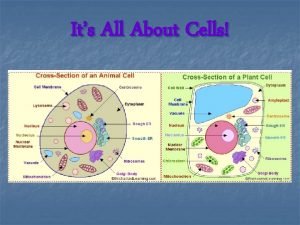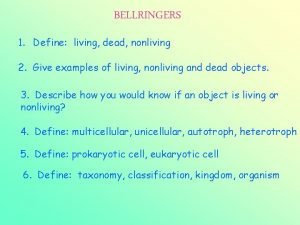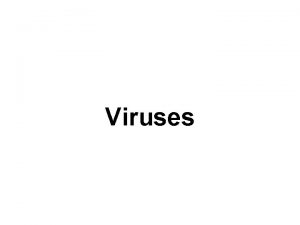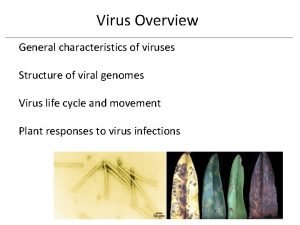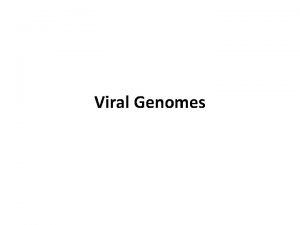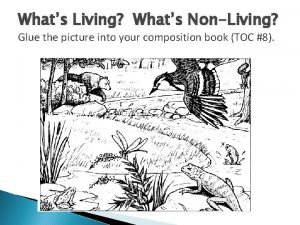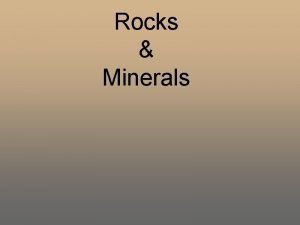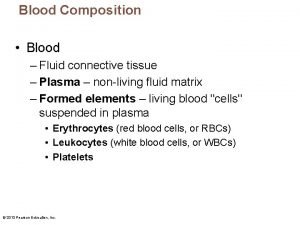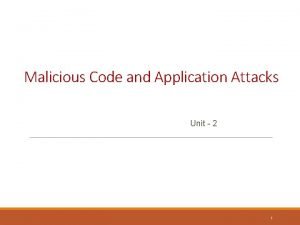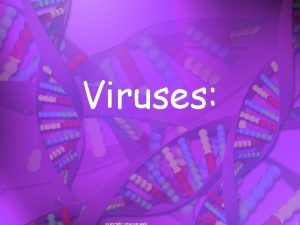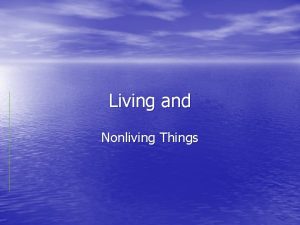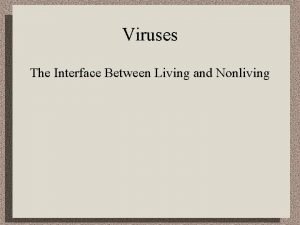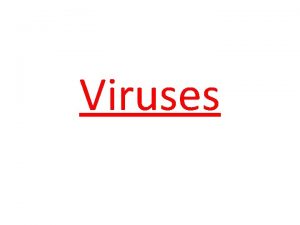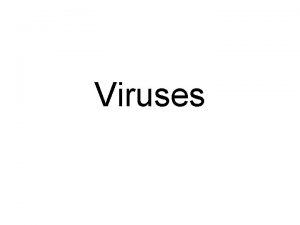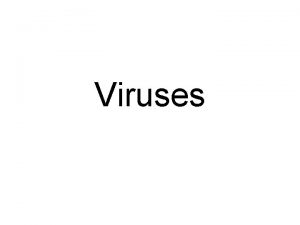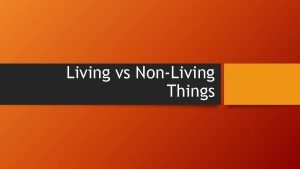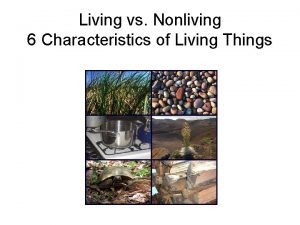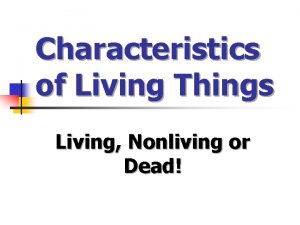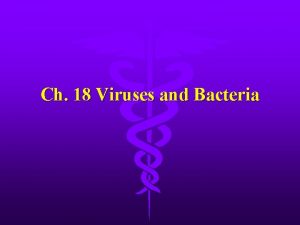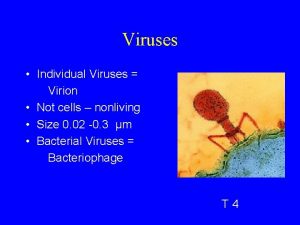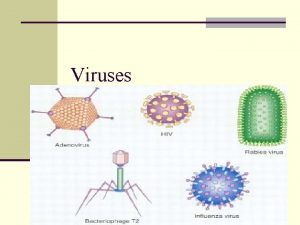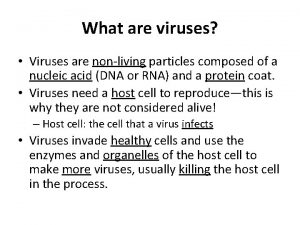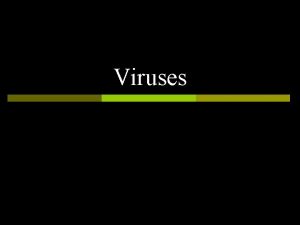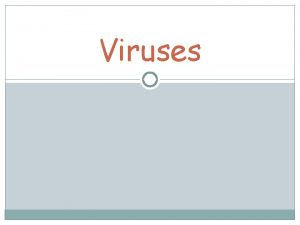CHARACTERISTICS OF VIRUSES Are Viruses Living or Nonliving






























- Slides: 30

CHARACTERISTICS OF VIRUSES

Are Viruses Living or Non-living? l l Biologists consider viruses to be non-living because: – Are not cells – Do not grow or respond to their surroundings – Cannot make food, take in food, or produce wastes – Viruses do not respond to stimuli. They can only multiply if in another living cell

What are Viruses? Definitionl Viruses are noncellular particles made up of genetic material and protein that can invade living cells.

Discovery of Viruses l. Beijerinck (1897) coined the Latin name “virus” meaning poison 4

Tobacco Mosaic Virus l. Wendell Stanley (1935) discovered viruses were made of nucleic acid and protein 5

Smallpox l. Edward Jenner (1796) developed a smallpox vaccine using milder cowpox viruses Smallpox has been eradicated in the world today 6

How Big is a Virus? l Viruses are very small – smaller than the smallest cell.

Characteristics Non living structures l Non-cellular l Contain a protein coat called the capsid l Have a nucleic acid core containing DNA or RNA (one or the other - not both) l Capable of reproducing only when inside a HOST cell l 8

Characteristics CAPSID Some viruses are enclosed in an protective envelope l Some viruses may have spikes to help attach to the host cell l Most viruses infect only SPECIFIC host cells ENVELOPE l 9 DNA SPIKES

HIV VIRUS l. Outside EBOLA VIRUS Characteris tics of host cells, viruses are inactive l. Viruses cause many common illnesses/ diseases l. Some viruses may cause some cancers 10 like leukemia MEASLES

Characteristics l. Viruses diseases cause many common illnesses l. Some viruses may cause some cancers like leukemia 11 MEASLES

What do Viruses look like? l l Viruses are unusual and different from other things in nature. Viruses come in a variety of shapes l. Some may be helical shape like the Ebola virus l. Some may be polyhedral shapes like the influenza virus l. Others have more complex shapes like bacteriophages

Types of Viruses: Helical Viruses 13

Polyhedral Viruses 14

Complex Viruses 15

Viral Taxonomy Family names end in -viridae l Genus names end in -virus l Viral species: A group of viruses sharing the same genetic information and ecological niche (host). l Common names are used for species l Subspecies are designated by a number l 16

Used for Virus Identification l Morophology – – 17 RNA or DNA Virus Do or do NOT have an envelope Capsid shape HOST they infect

Herpes Virus SIMPLEX I and II 18

Adenovirus 19 COMMON COLD

Influenza Virus 20

Chickenpox Virus 21

Papillomavirus – Warts! 22

HOST SPECIFICITY l l l All kingdoms can be infected by viruses Viruses are kingdom specific but they may or may not be species specific Spread is specific to the type of virus

PARASITISM l Viruses are parasites. – A parasite is an organism that depends upon another living organism for its existence in such a way that it harms that organism.

Bacteriophages 25

Cylces l Lysogenic Cycle – – l Lytic Cylce – – 26 Viral DNA May stay inactive in host for long periods of time Long lasting Example Mono or chickenpox Short and can be over come Example flu virus

Vaccine l Is a weaken form of the virus – To expose your immune system to the virus which will allow your body to better fight off the virus when exposed to the full blow virus.

Vector Control l l This is controlling the vectors that are carrying the virus. Examples: – – We stay home when sick, cover our mouth when we cough etc. We control the mosquito population in order to control the West Nile virus

Other Drug Treatments l. Specific viruses. to certain l. They don’t cure the virus but they can slow down and inhibit the multiplication of the virus. 29 copyright cmassengale

Reducing the Risk They can’t be treated but they can be prevented! l l Cover mouth/nose when you sneeze of cough Wash hands frequently Avoid contact with the body fluids Not foolproof but reduces the risks
 Antigentest åre
Antigentest åre Why are viruses considered nonliving?
Why are viruses considered nonliving? Why are viruses considered nonliving
Why are viruses considered nonliving Living and nonliving characteristics
Living and nonliving characteristics Lytic cycle animation
Lytic cycle animation /watch?v=dckvspcd8gs
/watch?v=dckvspcd8gs Ecosystem living and nonliving things
Ecosystem living and nonliving things Pyramid hesd
Pyramid hesd Is a burning candle living or nonliving
Is a burning candle living or nonliving Limiting factor in ecosystem
Limiting factor in ecosystem Egg living or nonliving
Egg living or nonliving Teori biogenesis
Teori biogenesis Protist coloring sheet answer key
Protist coloring sheet answer key Is a candle a living thing
Is a candle a living thing Are eukaryotic cells living or nonliving
Are eukaryotic cells living or nonliving Is sulfolobus living or nonliving
Is sulfolobus living or nonliving Is a starfish living or nonliving
Is a starfish living or nonliving Freshwater non living things
Freshwater non living things Tree is living or nonliving
Tree is living or nonliving Things in ecosystem
Things in ecosystem Nonliving particle that replicates inside a living cell
Nonliving particle that replicates inside a living cell How do viruses differ from living things
How do viruses differ from living things General characteristics of viruses
General characteristics of viruses General characteristics of viruses
General characteristics of viruses Living non living dead
Living non living dead Smallest living unit of life
Smallest living unit of life Whats nonliving
Whats nonliving Nonliving solid with crystal like properties
Nonliving solid with crystal like properties Smallest part of a cell
Smallest part of a cell Blood composition
Blood composition Viruses
Viruses

